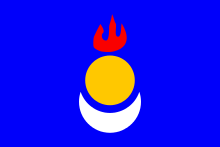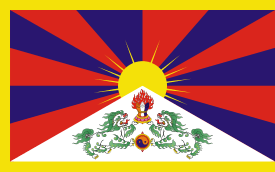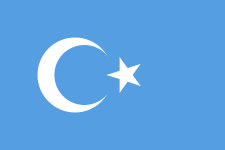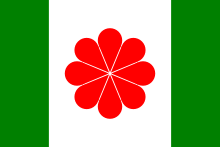Separatist movements of China
The ![]() People's Republic of China and the
People's Republic of China and the ![]() Republic of China insist sole legitimacy of China against each other. Practically, the former is administering Mainland China and the two special administrative regions of
Republic of China insist sole legitimacy of China against each other. Practically, the former is administering Mainland China and the two special administrative regions of ![]() Hong Kong and
Hong Kong and ![]() Macau and the latter is administering the Taiwan area.
Macau and the latter is administering the Taiwan area.
Mainland China
- Ethnic group: Mongolian
- Proposed state: Republic of South Mongol

- Political parties: Inner Mongolian People's Party (member of the Unrepresented Nations and Peoples Organization), Southern Mongolian Democratic Alliance,[1] Mongolian Liberal Union Party[2]
- Proposed state: Republic of South Mongol
- Ethnic group: Tibetan
- Proposed state:
 Tibet
Tibet
- Government-in-exile: Lobsang Sangay, head of the Tibetan Government in Exile[3] (member of the Unrepresented Nations and Peoples Organization)
- Political parties: International Tibet Independence Movement, National Democratic Party of Tibet[4]
- Advocacy group: Students for a Free Tibet, Tibetan Youth Congress, International Campaign for Tibet
- Proposed state:
- Ethnic group: Uyghur
- Proposed state:
 East Turkestan
East Turkestan
- Political parties: Uyghurstan Independence Movement
- Militant organisations: East Turkestan Islamic Movement, Uyghurstan National Front
- Advocacy groups: World Uyghur Congress (member of the Unrepresented Nations and Peoples Organization)
- Proposed state:
Special administrative regions
- Proposed state: Republic of Hong Kong
.svg.png)
- Advocacy group: Hong Konger Front
Taiwan area
Main articles: Political status of Taiwan and Taiwan independence
- Proposed state:


 Republic of Taiwan
Republic of Taiwan
- Political parties: Pan-Green Coalition (Democratic Progressive Party, Taiwan Solidarity Union, Taiwan Independence Party)
In perspective of the laws of the Republic of China, the Taiwan independence movement is considered as secessionism, but practically, the movement seeks to replace the ROC with the Republic of Taiwan because Taiwan area is the only practical region administered by the ROC.
In perspective of the laws of the People's Republic of China, the Taiwan independence movement is considered as secessionism, too because the PRC considers the Taiwan area as its integral part.
See also
References
- ↑ ""Inner Mongolian People’s Party" and the basic facts about its key members". Southern Mongolian Human Rights Information Center. Retrieved 2009-04-11.
- ↑ "モンゴル自由連盟党". Retrieved 2010-11-22.(JP)
- ↑ "Speech of His Holiness the Dalai Lama to the European Parliament, Strasbourg". The Office of His Holiness the Dalai Lama. 2001-10-14. Retrieved 2009-04-11.
- ↑ "INTERNATIONAL TIBET INDEPENDENCE MOVEMENT". International Tibet Independence Movement. Retrieved 2009-04-11.